#what causes urolithiasis
Explore tagged Tumblr posts
Text
PATHOLOGY OF THE URINARY SYSTEM (aka: STUFF WHAT GOES WRONG WITH YER PISS BEANS)
(AND YER PISS TUBES)
(and the pretty pictures I take of them)
[a warning: this post contains radiographic images and non-graphic description of serious kidney pathologies, including paediatric cancer]
Let's kick off with an old familiar friend! Yeah, I'm talking -
UROLITHIASIS (the humble kidney stone!)
Wanna know something horrific? The biggest kidney stone on record weighed over a kilogram. It was 17 cm across. Just. Imagine. Trying to piss that out…
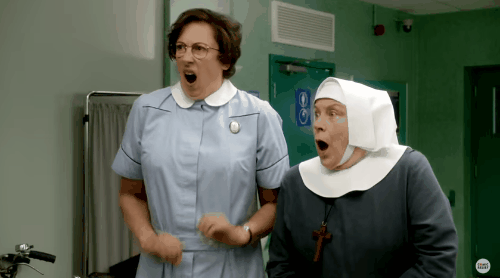
Urolithiases are formed anywhere among your urinary tracts. They’re commonly found in the kidneys, giving rise to the more common term, renal calculi, or kidney stones.
Urolithiasis occurs when compounds within your urine crystallise. If your urine becomes too acidic, too base, contains too many of these compounds for them to remain in solution, or simply… sits around too long without flowing, it literally petrifies into a solid lump!
Some unlucky souls are just… predisposed to developing them. If you have had a kidney stone in the past, you are far more likely to get another one in the future. There also seems to be a genetic link – so if someone in your immediate family gets kidney stones, you have a higher risk.
Kidney stones typically hang out in the pelvis of your kidney and don’t cause an issue. Until you try to piss them out. Remember our kidney diagram (drawn on a conveniently shaped bean)?
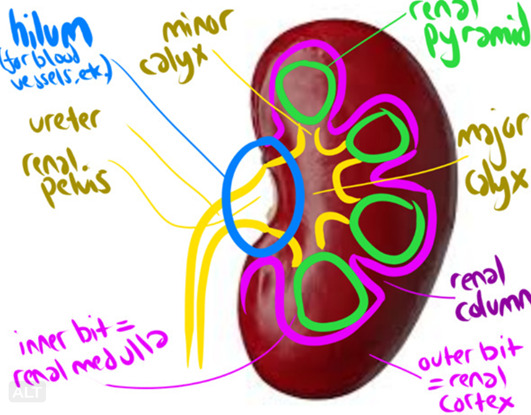
You might notice that the ureters are significantly smaller than the renal pelvis. In other words…

Most renal calculi are made of CALCIUM (oxalate, usually). This is very, very good (for us. Less so for you) because calcium attenuates x-rays – meaning, it glows all pretty and shiny when we take a radiograph!
Here’s a kidney stone on an Abdominal X-Ray!
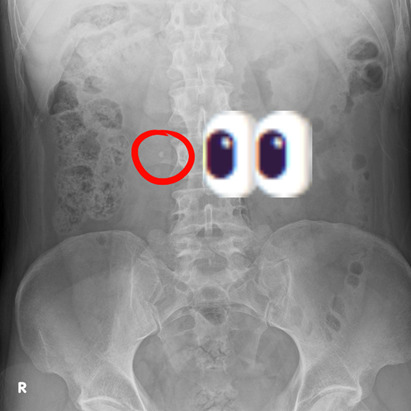
And a twinkly artefact caused by a kidney stone on Ultrasound!
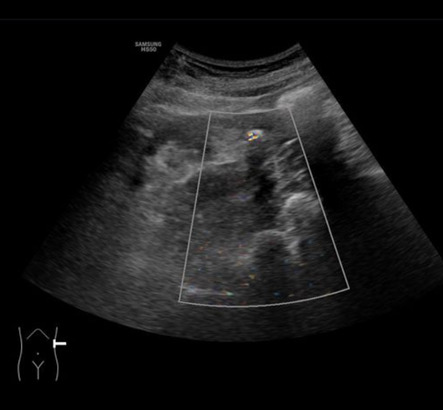
But the best way to assess urolithiases, is, of course, with CT!
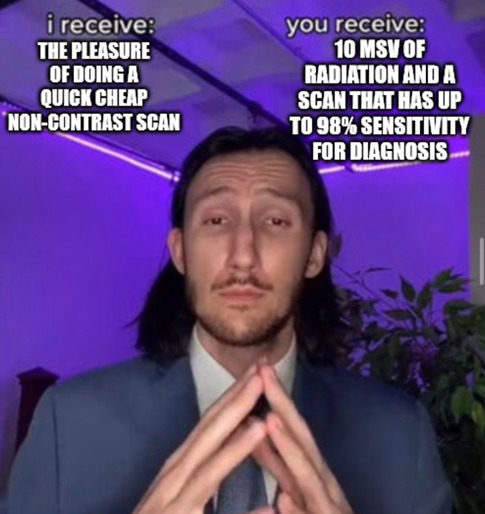
For realsies. We don’t need to inject contrast intravenously, because the kidney stones are (typically) shiny – which cuts down on time and worry, as it means you’re at no risk for having an adverse reaction! So a CT KUB (checking Kidneys, Ureters and Bladder for stones) is basically just a quick tumble in the washing machine (CT scanner), with a lovely clear picture as a result!
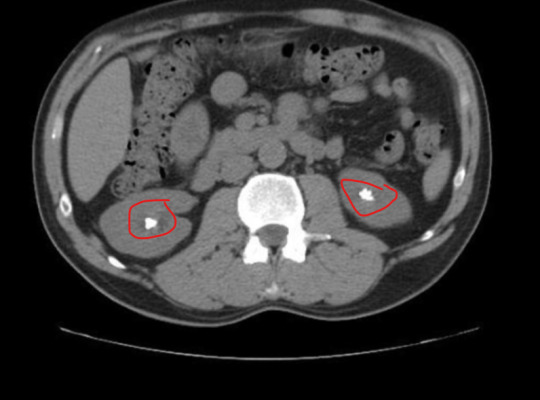
Look at these babies!! So sharp!!! So clear!!!!!! So shiny!!!!!!!!!!!! That’s a beautiful matching pair of renal calculi right there – and to make things better, they’re (currently) non-obstructive, so this patient isn’t in suffering The Agonies!
Speaking of The Agonies…
Most kidney stones are passable, albeit with extreme pain.
However, some ain’t going anywhere. Especially staghorn calculi, which, um. One, stags have antlers. Two…
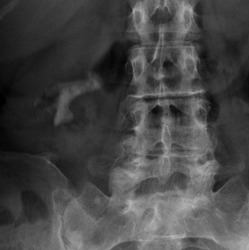
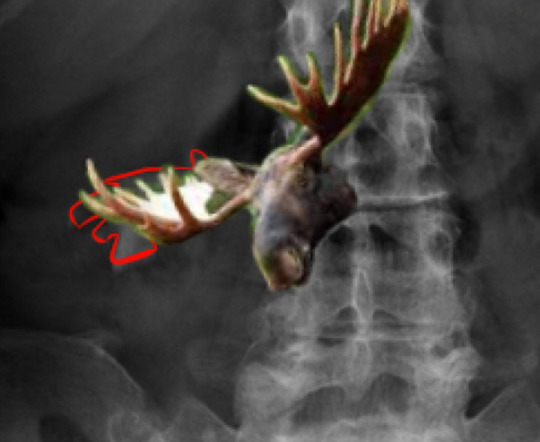
more like a fuckin' MOOSE ANTLER amirite????
But yeah, those buggers aren’t coming out. That’s almost definitely going to require surgery!
Smaller calculi can still cause problems when they become obstructive – i.e., they block the passage of your peepee. They can lead to:
HYDRONEPHROSIS (dilation of the renal pelvis due to retained urine, seen here in the Left kidney [right side of image])
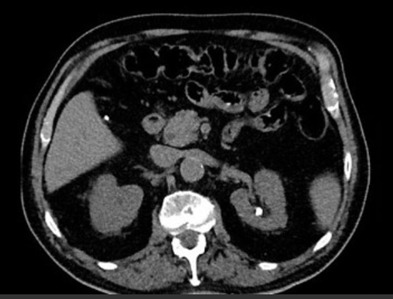
HYDROURETER (dilation of the ureter)
So, what do we do with bothersome calculi? How about some...
EXTRACORPOREAL SHOCKWAVE LITHOTRIPSY (ECSWL, because we love a sexy little acronym here in medworld).
We blast the stone apart with shockwaves, from outside your body! Ultrasound turned up to 11! Unfortunately, it only works on certain densities of stone, and on small stones.
LASER LITHOTRIPSY
(same thing but…. ZIP ZAP LASERZZZZZ]
SURGERY – PERCUTANEOUS NEPHROLITHOTOMY (PCNL).
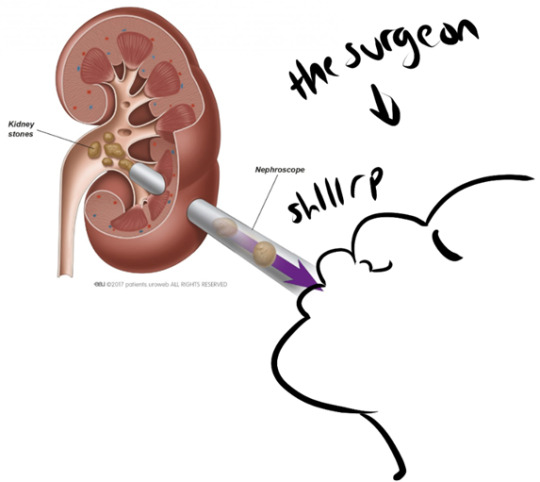
(I totally haven’t added to this diagram in any way. This is how it works. Trust me.)
LOADS of other stuff can go wrong with The Ol’ Piss Beans
We have:
RENAL CELL CARCINOMA
The most common form of kidney cancer.
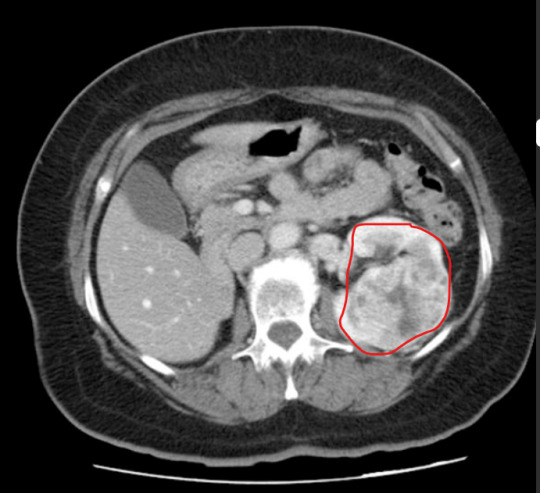
For suspected malignancies, we do a CT Urogram that assesses the whole urinary tract. This takes significantly longer than a KUB, but is well worth the results. This is a three-phase scan. We do...
A regular KUB non-contrast scan to check for calculi and to get our baseline Hounsfield Units ('grayness' and densities) for the kidneys. Then we inject contrast in a 'split bolus' - one load immediately, and another roughly 8 minutes in, scanning roughly a minute after the second injection is given. We scan 80 secs after the first contrast bolus is administrered, for the 'nephographic' phase, which enhances the renal cortex & medulla, and makes neoplastic changes and renal masses obvious (see image above). Then we wait 10-ish minutes and scan for the 'excretory' phase, after the contrast has worked its way through your kidneys, to detect 'filling defects' (anything that stops contrast opacification of the ureters) and pathologies related to the urinary collection system.
NEPHROBLASTOMA
This is one of the more common cancers found in kids. Although paediatric cancer is never exactly a happy topic, this cancer is now curable in roughly 90% of cases, thanks to the early removal of kidneys and the possibility of transplants.
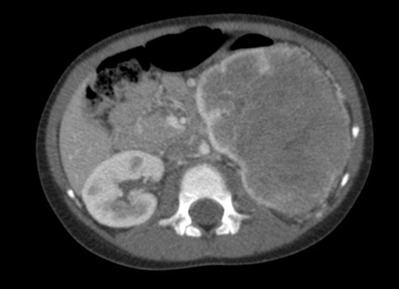
Autosomal Dominant (and Recessive) Polycystic Kidney Disease
An inherited renal disease that can cause you to go into End Stage Renal Failure due to the healthy tissue in your kidneys becoming completely overtaken by cysts. As a result, your kidneys can grow more and more, until they practically fill your whole abdomen. 45% of patients will be in ESRF and need dialysis by the age of 60. Thankfully, transplants are an option.
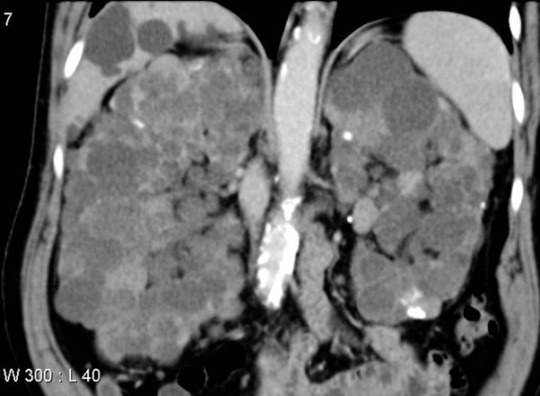
Other commonly encounutered renal pathologies include trauma, which I talked about in my first kidney ramble (linked here!), infections, and more.
I hope you enjoyed this whistle-stop tour of Stuff That Can Go Wrong With The Kidney, And How We Look At Them Gnarly Beans!
....And, um, I spent way too long making this and now need to pee. This is your reminder to go empty that bladder if you need to! Stop those stones!
16 notes
·
View notes
Text
Find the Best Kidney Stone Specialist in Salem at VIMS

Kidney stones are a painful and common urological condition that affects thousands of individuals every year. If you’re looking for a trusted and experienced kidney stone specialist in Salem, VIMS is your go-to healthcare destination. With state-of-the-art facilities and a team of top urologists, we provide comprehensive diagnosis, treatment, and prevention strategies for kidney stone problems.
Understanding Kidney Stones
Kidney stones are hard mineral deposits formed inside the kidneys due to concentrated urine, improper hydration, or imbalanced dietary habits. These stones can vary in size and may cause intense pain when passing through the urinary tract. The condition is medically known as nephrolithiasis or urolithiasis.
Common symptoms include:
Severe back or abdominal pain
Nausea and vomiting
Blood in urine
Pain during urination
Frequent urge to urinate
When these symptoms occur, timely consultation with a kidney stone specialist in Salem is essential to avoid complications.
Causes of Kidney Stones
There are several reasons why kidney stones form, including:
Low water intake
Excessive salt or protein in the diet
Family history of kidney stones
Obesity
Certain medications or medical conditions (e.g., gout)
Our specialists at VIMS conduct detailed evaluations to identify the root cause of your kidney stone problem and recommend personalized treatment accordingly.
Why Choose VIMS for Kidney Stone Treatment?
At VIMS, we take pride in being one of the most trusted healthcare centers with an expert team of kidney stone specialists in Salem. Here’s what sets us apart:
1. Expert Urologists
Our team includes board-certified urologists who specialize in diagnosing and treating kidney stones using advanced techniques. Whether it’s a small stone or a complex case requiring surgery, our specialists ensure safe and effective care.
2. Advanced Diagnostic Tools
We use cutting-edge imaging techniques such as ultrasound, CT scans, and X-rays to detect the location, size, and type of kidney stones. These tests help in creating accurate treatment plans tailored to your condition.
3. Minimally Invasive Procedures
VIMS offers modern treatment options, including:
ESWL (Extracorporeal Shock Wave Lithotripsy) – Uses shock waves to break stones into smaller pieces.
URS (Ureteroscopy) – A thin scope is passed into the bladder and ureter to remove stones.
PCNL (Percutaneous Nephrolithotomy) – Recommended for large stones, where a small incision allows direct stone removal.
Our kidney stone specialists in Salem are skilled in all these procedures, ensuring minimal recovery time and excellent outcomes.
4. Comprehensive Aftercare
We don’t just stop at treatment. Our team offers dietary advice, hydration plans, and lifestyle changes to prevent future stone formation. Regular follow-ups ensure that your kidneys remain healthy and stone-free.
When to See a Kidney Stone Specialist
If you experience any of the following, it’s time to see a kidney stone specialist in Salem:
Recurrent urinary tract infections
Severe or sudden pain in the lower back
Difficulty or pain while urinating
Visible blood in urine
A family history of kidney stones
Ignoring symptoms may lead to complications such as infections, kidney damage, or blockage in the urinary tract. Early intervention is key.
Affordable and Trusted Kidney Stone Care in Salem
VIMS is committed to offering world-class kidney care at affordable costs. We accept most insurance plans and offer flexible payment options. With a patient-friendly environment, multilingual staff, and personalized care, we strive to make your experience smooth and stress-free.
Our hospital is conveniently located and well-connected across Salem, making it easier for patients to access the best kidney stone specialist in Salem without hassle.
Patient Testimonials
"I had been suffering from kidney stone pain for weeks. The specialists at VIMS were quick to diagnose and treat me. I recovered in no time and got valuable advice to prevent it from happening again." – Rajesh K.
"The facilities at VIMS are top-notch. From admission to discharge, everything was well-organized, and the doctors were extremely knowledgeable." – Meena S.
Book an Appointment Today
If you or a loved one is facing kidney stone issues, don’t delay. VIMS offers expert consultation with leading kidney stone specialists in Salem. Book your appointment online or call our helpline to get started on your path to pain-free living.
Conclusion
Kidney stones can be incredibly painful and disruptive, but with timely diagnosis and expert care, they are highly treatable. VIMS offers exceptional care with some of the best kidney stone specialists in Salem, ensuring effective, safe, and affordable treatment for every patient. With our modern facilities, compassionate care, and experienced team, your kidney health is in the right hands.
0 notes
Text
Kidney Stones: Causes, Symptoms, Treatment, and Prevention – A Complete Guide
FacebookMessengerWhatsApp

Understanding Kidney Stones: A Comprehensive Guide
Kidney stones are a widespread and painful health issue that affects millions around the world. In India, an estimated 12% of the population is affected by kidney stones (urolithiasis), with a higher prevalence (15%) in northern states. This translates to roughly 5 to 7 million patients annually. If you or someone close to you is dealing with kidney stones, it’s crucial to understand the causes, symptoms, and treatment options available. Fortunately, leading hospitals, such as IBM Hospital in Panipat, offer effective care for kidney stones, ensuring that patients receive the best possible treatment.
What Are Kidney Stones?
Kidney stones are small, hard mineral and salt deposits that form within the kidneys. Although they can vary in size, they often cause significant discomfort while traveling through the urinary tract. Understanding their composition and how they form can help in managing and preventing them effectively.
Types of Kidney Stones
There are different types of kidney stones, each with distinct causes and risk factors:
Calcium Stones: The most commonly found type, these stones are primarily made of calcium oxalate or calcium phosphate.
Uric Acid Stones: These form when there is an excess of uric acid in the urine, often due to conditions like gout or a high consumption of purine-rich foods such as red meat and shellfish.
Struvite Stones: Typically linked to urinary tract infections (UTIs), these stones can grow rapidly and become quite large.
Cystine Stones: These are rare and usually occur due to a hereditary condition called cystinuria, which leads to high levels of cystine in the urine
Why Choose IBM Hospital for Kidney Stone Treatment?
IBM Hospital stands out due to its exceptional medical care and patient-focused approach. Here’s why it’s a top choice:
Expert Urologists: The hospital houses highly skilled urologists, including Dr. Udipt Shringi, who specialize in kidney stone treatment and urological care.
Advanced Technology: IBM Hospital uses the latest technology for accurate diagnosis and treatment, including minimally invasive procedures for kidney stone removal.
Comprehensive Care: From diagnosis to treatment and follow-up care, IBM Hospital offers a patient-first approach, ensuring personalized and compassionate care.
About Dr. Udipt Shringi – Leading Urologist at IBM Hospital
Dr. Udipt Shringi is an expert urologist at IBM Hospital, specializing in kidney stone management, urinary tract issues, and overall urological health. His extensive experience in treating complex cases makes him one of the top urologists in Panipat. With a patient-centered approach, he ensures that each patient receives the best possible care tailored to their individual needs.
Why Trust IBM Hospital for Your Kidney Stone Treatment?
Experienced urologists like Dr. Udipt Shringi
Cutting-edge technology for precise diagnosis and treatment
Comprehensive care with 24/7 emergency services available
Conclusion
Kidney stones can be excruciating, but with the right treatment, they are manageable. If you or a loved one is suffering from kidney stones, don’t hesitate to visit IBM Hospital, one of the leading healthcare providers in Panipat, for expert care. With advanced technology and a team of specialists, you can trust that you’re in good hands.
0 notes
Text
Bladder stones, or urolithiasis, are mineral deposits that form in the bladder. Symptoms include abdominal pain, frequent urination, and blood in the urine. Causes include concentrated urine, urinary tract infections, and bladder catheters. Diagnosis involves physical exams and imaging tests. Prevention involves staying hydrated and treating urinary tract issues promptly. Understanding these factors is crucial for managing bladder stone conditions effectively.
#bladder stones#urinary bladder stone#stone in urinary bladder#bladder stones causes#bladder stone treatment#Prevention Bladder Stones
0 notes
Video
youtube
Podcast: Role Of Diet In Prevention Of Kidney Stones | Nelivigi Multispeciality and Urology Hospital Bellandur
Welcome back to “Urology for Everyone” podcast, this is Dr. Girish Nelivigi, Urologist and Andrologist with you. In today’s podcast episode I am going to talk about “What is the role of diet in the prevention of Kidney Stones?”
This is the most common question asked by patients with kidney stones. The common perception among people is that a specialized diet can prevent stones. However, the reality is far more complex. There is no particular diet that can prevent the formation of kidney stones. Diet plays a role only when a person consumes food that is overly excessive or severely deficient in some nutrients. For example, a diet severely deficient in calcium may cause calcium stones. This is because a calcium-deficient diet increases the absorption of oxalate that leads to stone formation. At the other end of the spectrum, calcium supplements may increase the risk of stone formation especially when these supplements are taken at a separate time from the main meals.
A common question asked is whether a patient with stones should cut down on the consumption of milk and other dairy products like cheese, curds, and paneer. All these foods contain calcium and there is no need to cut down on these foods for the reason we discussed earlier.
So, today’s podcast is very important to know what is the role of diet in the prevention of kidney stones. Listen to it carefully.
To Listen more podcast episodes visit: https://podcasters.spotify.com/pod/show/drgirishnelivigi/
To know more log on to http://www.nelivigimultispecialityhospital.com/ or book an appointment @ 080 4866 8768
#NelivigiUrology #Urolithiasis #DrGirishNelivigi #NelivigiMultispecialityHospital #NelivigiMultispeciality #UTI #urinarytractinfection #urinaryinfection #urinaryhealth #CKD #Doctor #Urologist #Urologists #Urology #UrologyProblems #UrologyIssues #kidney #kidneydisease #kidneyhealth #health #kidneystones #urinarytractinfections #Bellandur #Bangalore
0 notes
Text

How to feed a castrated British cat at home?
When a British cat is worried, marks, tears furniture, persistently asks for a cat, the best way out is to castrate the animal. This procedure will save the castrated British cat from torment, and the owner from unnecessary trouble.
After the operation, the pet may develop new problems: obesity, urolithiasis, constipation, heart disease. A well-chosen balanced food, suitable for home British cat, will help to save the animal from trouble.
What you can’t feed a Briton?
At home, you cannot feed a castrated Briton with homemade food containing spices, salt, sugar. List of products prohibited for operated animals:
fish, seafood;
smoked, salted, fried, spicy foods;
fat meat; sweets;
semi-finished products;
bakery products.
Sweet, baked, starchy foods lead to diabetes, obesity, other foods are the cause of kidney and gastrointestinal tract diseases.
Magnesium, which contains fish, seafood, leads to the formation of stones, so fish is contraindicated in castrated British cats.
Read more at the link! PetmasterClinic
#pet#cat#catfood#feedingcat#britishcat#Briton#catlover#petmater#petmasterclinic#britoncat#castrated#castratedbritishcat#British
1 note
·
View note
Text
New Post has been published on Health is priceless. Trust the best.
New Post has been published on http://bit.ly/2EFA0mn
Bladder stones
#cystine urolithiasis#nephro urolithiasis#struvite urolithiasis#treatment for urolithiasis#urolithiasis case study#urolithiasis in animals diet#what causes urolithiasis
0 notes
Text
Urolithiasis
Stones can be located anywhere along the urinary tract - nephrolith, ureterolith, urocystolith, urethrolith.
Signs of urolithiasis may include: - Abdominal pain - Abnormalities of urination (difficulty, frequency, blood) - Straining with the absence of urine (this is an emergency - obstruction) - Anorexia - Vomiting - Depression - Palpation of stone in empty bladder or urethra per rectum
Diagnostics:
Bloodwork If blockage may see post renal azotemia - increased K, P, BUN, creatinine.
Urinalysis Urinary tract inflammation - hematuria, pyuria, may see bacteriuria. Urine pH - struvite crystals precipitate in alkaline urine. Crystals - presence does not mean there are stones, absence does not mean there are not stones. Can be observed in normal individuals.
What is the relationship between stones and UTIs? Stones may lead to infection - mucosal damage, incomplete voiding, bacterial entrapment in stones. UTIs may lead to stones - urease producing bacteria can alkalinize urine.
Radiographs Stones only visible if >1mm in diameter. Generally radiopaque (visible on radiograph) - struvite and calcium oxalate. Asses bladder size - evidence of obstruction? Ultrasound is superior for detection as it detects all types of stones (urate, cystine, and calcium phosphate may not show up on radiograph).
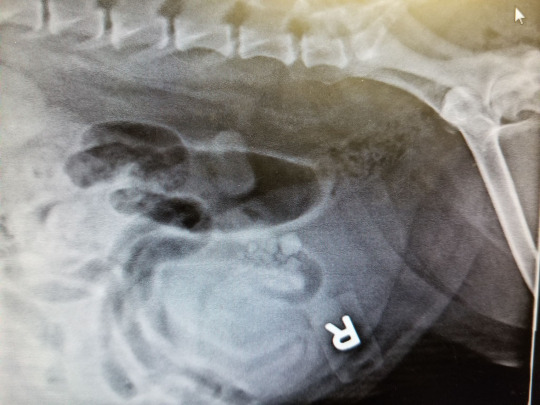
Above is a lateral view demonstrating stones within the bladder. A V/D was also obtained. Always take at least two views. This patient presented for increased frequency of small amounts of urine.
Types of stones:
Struvite Accounts for 50% of canine stones and 30% of feline stones. UTI may predispose to the formation through acidification of the urine.
Calcium Oxalate Accounts for 35% of canine stones and 50-70% of feline stones.
Urate Seen in dogs with portosystemic shunts - high excretion of ammonium biurate crystals. Seen in dalmations - defective hepatic transport of uric acid. My not show on radiographs - show up on ultrasound.
Cystine Inherited disorder - excessive elimination of cystine in the urine. Most commonly seen in male Dachshunds between age 3-6. Stones may show faintly on radiographs - show up on ultrasound.
Silicate Linked to consumption of large amounts of corn gluten and soybean hulls (high in silicates).
Treatment:
Treatment largely depends on the presentation of the patient. Medical management is not suitable for many patients (obstruction occurring or imminent, stone type not known, very large stones, sharp stones etc). If obstructed, emergency intervention is required.
Medical Management Calcium oxalate, urate, cystine, and silicate stones CAN NOT be dissolved and require surgical removal. Struvite stones can occasionally be dissolved with a special diet.
Surgical Treatment Stones may be removed surgically. Surgery varies depending upon the location of the stone. Bladder stones are removed via cystotomy which is often performed in general practice. Stones should be sent away for analysis to determine the appropriate steps moving forward (ie diet).
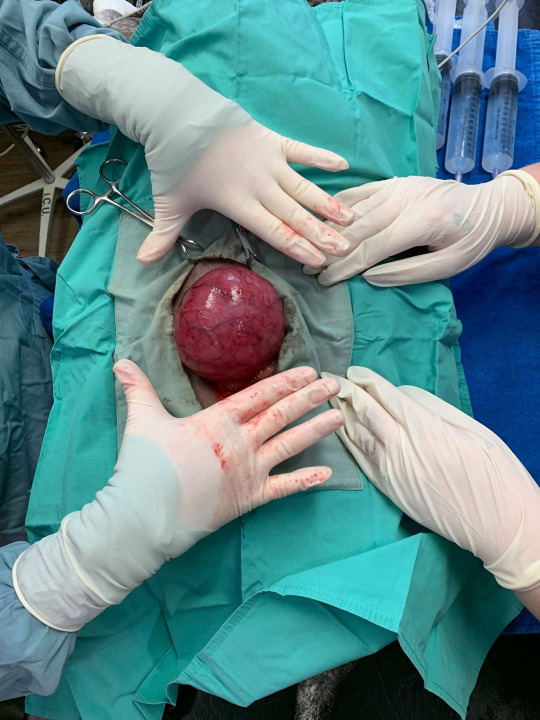
Above is an exposed bladder at the start of a cystotomy procedure. The patient was only passing small amounts of urine. Over 300ml of urine was removed from the bladder before an incision was able to be made.
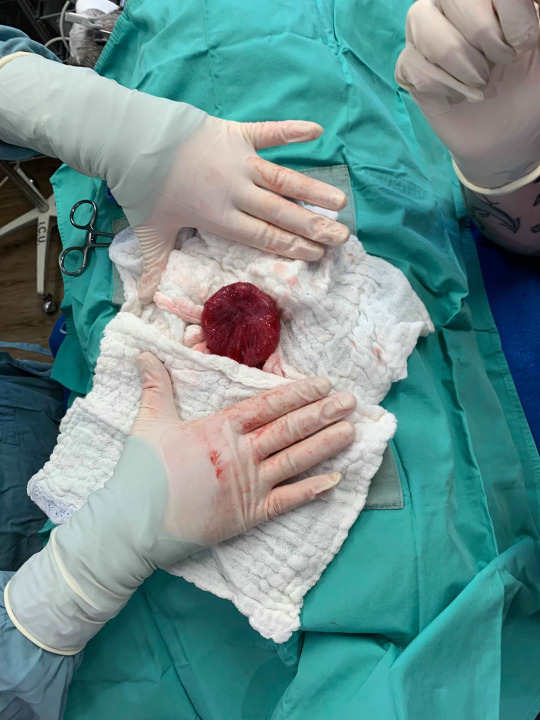
Above is the same bladder after emptying the urine via cystocentesis, before incision.
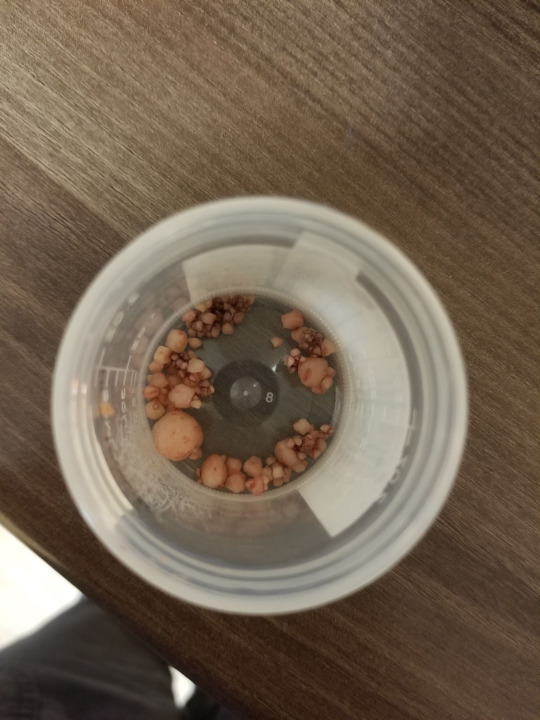
Above are the stones that were removed from the bladder and urethra. The largest stone pictured was located within the urethra, causing a partial obstruction. The stones were sent away for analysis.
Aftercare Many of these stones have a high occurrence rate. Prevention with the appropriate prescription diet is essential. Treatment of concurrent urinary tract infection is essential. Appropriate monitoring is helpful in guiding recommendations moving forward - ie follow up urinalysis.
16 notes
·
View notes
Text
kidney stone,kidney stone symptoms,kidney stones pain,kidney stones causes

What is a kidney stone (nephrolithiasis)?
A kidney stone is a hard, crystalline mineral material formed within the kidney or urinary tract. Kidney stones are a typical reason for blood in the urine (hematuria) and regularly extreme agony in the midriff, flank, or crotch. Kidney stones are some of the time called renal calculi.
The state of having kidney stones is named nephrolithiasis. Having stones at any area in the urinary tract is alluded to as urolithiasis, and the term ureterolithiasis is utilized to allude to stones situated in the ureters.
Causes of kidney stones
Kidney stones structure when there is a decline in pee volume as well as an overabundance of stone-shaping substances in the pee. The most well-known sort of kidney stone contains calcium in mix with either oxalate or phosphate. A lion's share of kidney stones are calcium stones. Other concoction exacerbates that can frame stones in the urinary tract incorporate uric corrosive, magnesium ammonium phosphate, and the amino corrosive cysteine.
Parchedness from decreased liquid admission or strenuous exercise without sufficient liquid substitution builds the danger of kidney stones. Hindrance to the progression of pee can likewise prompt stone development. In such manner, atmosphere might be a hazard factor for kidney stone advancement, since inhabitants of hot and dry regions are bound to wind up got dried out and vulnerable to stone arrangement.
Kidney stones can likewise result from disease in the urinary tract. These are known as struvite or disease stones. Metabolic variations from the norm, including acquired issue of digestion, can change the creation of the pee and increment a person's danger of stone arrangement.
Symptoms of kidney stones
Stones in the kidney frequently don't cause any signs and can go undiscovered. At the point when a stone leaves the kidney, it goes to the bladder through the ureter. Frequently the stone can move toward becoming held up in the ureter. At the point when the stone hinders the progression of pee out of the kidney, it can make the kidney swell (hydronephrosis), frequently causing a great deal of agony.
Common symptoms of kidney stones are:
· A sharp, cramping torment in the back and side, frequently moving to the lower midriff or crotch. A few ladies state the torment is more terrible than labor work torments. The agony regularly begins all of a sudden and comes in waves. It can go back and forth as the body attempts to dispose of the stone.
· A feeling of extraordinary need to urination.
· Urinating all the more frequently or a consuming inclination during urination.
· Urine that is dull or red because of blood. Some of the time urine has just limited quantities of red platelets that can't be seen with the unaided eye.
· Nausea and vomiting.
· For men, you may feel torment at the tip of the penis.
Here are some quick Ayurveda home remedies for effective relief from Kidney Stones:
1. Water
First and foremost remedy recommended for quick, characteristic help from kidney stones is water. Drink parcels and parts a greater amount of water. This aides in keeping your body hydrated, and furthermore in flushing out poisons and other undesirable minerals and waste items that are in charge of the arrangement of stones. The drinking water will make it simpler for the stones to pass.
2. Lemon juice
You can add newly crushed lemons to your water as regularly as you like. Lemons contain citrate, which is a concoction that forestalls calcium stones from framing. Citrate can likewise separate little stones, enabling them to pass all the more effectively.
A lot of lemons would be expected to make an immense impact, however some can support a bit.
Lemon juice has various other medical advantages. For instance, it represses bacteria development.
3. Basil
Basil contains mixes known to help settle uric corrosive dimensions, making it harder for kidney stones to frame. Likewise, basil contains acidic corrosive, a concoction known to help break down stones.
One teaspoon of basil remove or unadulterated juice every day may help avoid and treat kidney stones.
You shouldn't use restorative basil juice for over about a month and a half at any given moment. Stretched out use may prompt:
· low glucose
· low pulse
· expanded dying
4. Apple cider vinegar
Apple cider vinegar contains acidic corrosive. Acidic corrosive breaks down kidney stones.
In addition to flushing out the kidneys, apple cider vinegar can help ease pain caused by the stones. There are various other medical advantages of apple cider vinegar.
To receive these rewards, include 2 tablespoons of apple cider vinegar to 6 to 8 ounces of decontaminated water. Drink this blend for the duration of the day.
You shouldn't devour more than one 8-ounce glass of this blend every day. You can also use it on plates of mixed greens straight or add it to your preferred serving of mixed greens dressing. Whenever ingested in bigger sums, apple cider vinegar can prompt low dimensions of potassium and osteoporosis.
Individuals with diabetes should exercise alert when drinking this blend. Screen your glucose levels cautiously for the duration of the day.
You shouldn’t drink this mixture if you’re taking:
· insulin
· digoxin (Digox)
· diuretics, such as spironolactone (Aldactone)
5. Coconut Water
Coconut water is one of the healthiest drinks and is considered to be good for the dissolution of kidney stones. It has been proven effective in breaking and flushing out the kidney stones from the body through urine. It is also found effective in relieving the burning sensation during urination.
6. Wheatgrass juice
Green smoothie encompassed by wheatgrass shoots.
Wheatgrass juice can oust minerals and salts from the urinary tract, keeping them from crystalizing into kidney stones.
Wheatgrass contains intensifies that expansion pee generation, enabling stones to pass all the more effectively and diminishing the danger of their development.
Wheatgrass additionally contains cancer prevention agents, which help free the urinary tract of minerals and salts.
The urinary advantages of wheatgrass are best gotten by devouring 2-to 8-oz of unadulterated concentrate or squeeze day by day. Supplemental powders or pills are additionally accessible to buy on the web or at numerous wellbeing stores.
7. Horsetail juice
Horsetail has been used to increment urine stream to flush out kidney stones and can mitigate swelling and aggravation. It also has antibacterial and cancer prevention agent properties that guide in generally speaking urinary health.
However, the Cleveland Clinic cautions against its use. You shouldn't use horsetail for over about a month and a half at any given moment. There are risks of seizures, diminished dimensions of B nutrients, and loss of potassium.
You shouldn't use horsetail in the event that you take lithium, diuretics, or heart prescriptions, for example, digoxin. Horsetail isn't prescribed for youngsters and pregnant or breastfeeding ladies. Horsetail contains nicotine and shouldn't be taken on the off chance that you are utilizing a nicotine fix or attempting to stop smoking.
You also shouldn’t drink horsetail juice if you have:
· alcohol use disorder
· diabetes
· low potassium levels
· low thiamine levels
8. Pomegranate juice
The astringent and cancer prevention agent properties of pomegranates are thought to decrease the odds of creating kidney stones and facilitate their section.
Pomegranate juice additionally contains intensifies that lower the causticity of urine, making it harder for stones to shape.
Purchasing entire pomegranates and eating their seeds or juicing them is the least demanding approach to get these medical advantages.
You shouldn’t drink pomegranate juice if you’re taking:
· medications changed by the liver
· blood pressure medications, such as chlorothiazide (Diuril)
· rosuvastatin (Crestor)
9. Celery juice
Celery juice is thought to gather up poisons that add to kidney stone arrangement and has for some time been utilized in customary drugs. It additionally enables flush out the body so you to can pass the stone.
Mix at least one celery stalks with water, and drink the juice for the duration of the day.
You shouldn’t drink this mixture if you have:
· any bleeding disorder
· low blood pressure
· a scheduled surgery
You also shouldn’t drink this mixture if you’re taking:
· levothyroxine (Synthroid)
· lithium (Lithane)
· medications that increase sun sensitivity, such as isotretinoin (Sotret)
· sedative medications, such as alprazolam (Xanax)
10. Dandelion root juice
Dandelion root is a kidney tonic that stimulates the production of bile. This is thought to help eliminate waste, increase urine output, and improve digestion. Dandelions have vitamins (A, B, C, D) and minerals such as potassium, iron, and zinc.
You can make new dandelion juice or get it as a tea. In the event that you make it new, you may also include orange strip, ginger, and apple to taste. Drink 3 to 4 cups for the duration of the day.
A few people experience heartburn when they eat dandelion or its parts.
You shouldn’t drink this mixture if you’re taking:
· blood thinners
· antacids
· antibiotics
· lithium
· diuretics, such as spironolactone
Talk to your doctor before taking dandelion root extract, as it can interact with many medications.
1 note
·
View note
Text
What is prostatomegaly & how frequently is it noticed?

Castrated male ferrets can range in age from middle age to old and suffer from the potentially serious ailment known as prostate disease. Indeed, urolithiasis is less frequent in male ferrets than urethral blockage followed by prostatomegaly. Although the mechanism behind the formation of prostatic cysts is unknown, androgens appear to increase the growth of prostatic tissue.
What causes the prostate gland to grow?
They are typically benign until a clinical examination and noticeably abnormal laboratory blood tests indicate a suspected cancer development in the prostate, which would require a confirmed prostate biopsy. A person may not have any symptoms or experience symptoms such as a urinary infection and obstruction in the urine outflow canal depending on the grade and size of the swollen gland.
Symptoms
Many symptoms that are brought on by prostatomegaly might get worse with time.
Common BPH warning indicators and symptoms include:
frequent urges to urinate or a rise in the frequency of nocturnal urination (nocturia)
having trouble urinating in the first place
The bladder has not entirely emptied when there is weak urine flow, intermittent urination, or dribbling after urinating.
Less frequent indications and symptoms include:
urinary tract infection causing difficulty urinating
blood in the urine
Treatments
As there is no cure for BPH, the goal of treatment is to manage symptoms. The degree of symptoms, the patient’s level of discomfort, and any potential side effects all have an impact on the course of treatment. The therapy should be more aggressive the more distressing the symptoms are. (homeopathic hospital Near Me)
The following are the main BPH treatments:
Active Observation prescription medication
Minimally invasive surgery
More drastic measures
Engaged Observation
Active surveillance is the BPH therapy that is most frequently used. If you and your doctor decide to proceed with this course of therapy, it will be attentively watched but not actively controlled. As a result, your urologist will frequently assess your BPH. An annual exam is shared. Before making more recommendations, your healthcare provider will first look for severe or more urgent problems. The standard recommendations are diet and exercise to lessen or get rid of your symptoms.
Medicines on prescription
Prescription medications could be an option for BPH-afflicted males. Among the several drug categories are:
Blockers and Alpha-blockers are medications that reduce BPH symptoms by reducing tension in the prostate and bladder muscles.
They do not shrink the prostate, but if there is a blockage, they might enhance urine flow. Alpha-blockers have the advantage of working swiftly. Dizziness, lightheadedness, weariness, and problems ejaculating are a few potential adverse effects.
5- Drugs that Inhibit Alpha Reductase
By blocking DHT, 5-alpha reductase inhibitors can improve urine flow and slow prostate development. Male hormone DHT can accumulate in the prostate and lead to prostatic growth.
Parallel Therapy
In a combination therapy, 5-alpha reductase inhibitors and alpha-blockers are both administered concurrently. These could work better together than either medicine alone to stop BPH from getting worse. Comparatively speaking, taking two medicines raises the likelihood of experiencing substantial adverse effects. ( homeo doctor near me )
Phytotherapies
Physiotherapies are herbal medicines, however medical professionals do not advise utilising them. Saw palmetto is one of the most typical botanicals. Critical research have established their inefficiency. Supplements come in a range of purity and quality.
Minimally Invasive Surgery
Minimally invasive surgical techniques (MIST) may typically be performed as an outpatient procedure without the need for a hospital stay. Recovery frequently happens more quickly. It can relieve symptoms, including issues with urine control. Certain MISTS don’t lessen the possibility that you’ll require further treatment or surgery.
Exist any problems?
Any procedure for prostatomegaly may have unanticipated side effects or problems, including bleeding, urethral stricture, urine leakage or incontinence, erectile dysfunction, and retrograde ejaculation.
Prostate cancer is not brought on by BPH, nor does it increase your risk of getting it.
At our Rootcure homeopathic online treatment center, people with prostatomegaly benefit from our cutting-edge homeopathic therapy packages. For spondylitis, we utilize the most comprehensive homeopathic treatment plan that is supported by science and offers a durable cure. Please schedule a consultation session right now to receive professional guidance on the top homeopathic prostatomegaly remedies available in India.
0 notes
Text
Kidney Stones: Causes, Symptoms, Treatment, and Prevention – A Complete Guide
FacebookMessengerWhatsApp

Understanding Kidney Stones: A Comprehensive Guide
Kidney stones are a widespread and painful health issue that affects millions around the world. In India, an estimated 12% of the population is affected by kidney stones (urolithiasis), with a higher prevalence (15%) in northern states. This translates to roughly 5 to 7 million patients annually. If you or someone close to you is dealing with kidney stones, it’s crucial to understand the causes, symptoms, and treatment options available. Fortunately, leading hospitals, such as IBM Hospital in Panipat, offer effective care for kidney stones, ensuring that patients receive the best possible treatment.
What Are Kidney Stones?
Kidney stones are small, hard mineral and salt deposits that form within the kidneys. Although they can vary in size, they often cause significant discomfort while traveling through the urinary tract. Understanding their composition and how they form can help in managing and preventing them effectively.
Types of Kidney Stones
There are different types of kidney stones, each with distinct causes and risk factors:
Calcium Stones: The most commonly found type, these stones are primarily made of calcium oxalate or calcium phosphate.
Uric Acid Stones: These form when there is an excess of uric acid in the urine, often due to conditions like gout or a high consumption of purine-rich foods such as red meat and shellfish.
Struvite Stones: Typically linked to urinary tract infections (UTIs), these stones can grow rapidly and become quite large.
Cystine Stones: These are rare and usually occur due to a hereditary condition called cystinuria, which leads to high levels of cystine in the urine
Key Causes of Kidney Stones
Several factors contribute to the development of kidney stones. Understanding these causes can help in prevention and early intervention:
Dehydration: Inadequate fluid intake leads to more concentrated urine, increasing the likelihood of stone formation.
Dietary Factors: A diet high in sodium, protein, and oxalate-rich foods can contribute to stone development.
Obesity: Being overweight increases the risk of kidney stones due to changes in the body’s metabolic processes.
Genetics: A family history of kidney stones can raise the risk of developing them yourself.
Certain Medical Conditions: Conditions such as gout, Crohn’s disease, and hyperparathyroidism can predispose individuals to kidney stones.
Common Symptoms of Kidney Stones
The symptoms of kidney stones can be quite severe and may include:
Intense pain, often in the lower back, side, or abdomen
Blood in the urine (hematuria)
Nausea and vomiting
Frequent urination or difficulty urinating
Fever and chills (if there’s a concurrent infection)
Intense pain, often in the lower back, side, or abdomen
Blood in the urine (hematuria)
Nausea and vomiting
Frequent urination or difficulty urinating
Fever and chills (if there’s a concurrent infection)
Best Kidney Stone Treatment in Panipat
For those seeking the best medical care, IBM Hospital in Panipat is one of the top medical centers offering advanced and effective treatments for kidney stones. The hospital is equipped with state-of-the-art diagnostic tools and a team of specialized urologists who provide expert care for kidney stone patients.

Why Choose IBM Hospital for Kidney Stone Treatment?
IBM Hospital stands out due to its exceptional medical care and patient-focused approach. Here’s why it’s a top choice:
Expert Urologists: The hospital houses highly skilled urologists, including Dr. Udipt Shringi, who specialize in kidney stone treatment and urological care.
Advanced Technology: IBM Hospital uses the latest technology for accurate diagnosis and treatment, including minimally invasive procedures for kidney stone removal.
Comprehensive Care: From diagnosis to treatment and follow-up care, IBM Hospital offers a patient-first approach, ensuring personalized and compassionate care.
About Dr. Udipt Shringi – Leading Urologist at IBM Hospital
Dr. Udipt Shringi is an expert urologist at IBM Hospital, specializing in kidney stone management, urinary tract issues, and overall urological health. His extensive experience in treating complex cases makes him one of the top urologists in Panipat. With a patient-centered approach, he ensures that each patient receives the best possible care tailored to their individual needs.
Why Trust IBM Hospital for Your Kidney Stone Treatment?
Experienced urologists like Dr. Udipt Shringi
Cutting-edge technology for precise diagnosis and treatment
Comprehensive care with 24/7 emergency services available
Conclusion
Kidney stones can be excruciating, but with the right treatment, they are manageable. If you or a loved one is suffering from kidney stones, don’t hesitate to visit IBM Hospital, one of the leading healthcare providers in Panipat, for expert care. With advanced technology and a team of specialists, you can trust that you’re in good hands.
1 note
·
View note
Text
Kidney problems
Several conditions may affect or damage the kidneys.
Some of the most common types of kidney problems/diseases are chronic kidney diseases. Other diseases include acute kidney injury, kidney stones, infections, cysts, and cancer.
What is a Kidney Stone?
Kidney stones are also termed renal calculi, nephrolithiasis, and urolithiasis. These are hard deposits of minerals or salts formed inside the kidneys. Renal calculi are a typical reason for blood in the Urine (hematuria) and torment in the midsection/abdomen, flank, or groin. Having stones in any area in the urinary tract is alluded to as urolithiasis.
The stones in the ureters is termed as ureterolithiasis.
There are 4 types of kidney stones -
किडनी स्टोन चार प्रकार के होते हैं- 1. कैल्शियम स्टोन 2. यूरिक एसिड स्टोन 3. स्ट्रूविटा स्टोन 4. सिस्टिन स्टोन
Nephrolithiasis is extremely painful and can lead to kidney infections.
And if untreated kidney won't function properly.
Causes of Kidney stones/Nephrolithiasis/urolithiasis
At the point when substances in the urine, for example, calcium, oxalate, and phosphorus become profoundly focused there are chances that they can frame renal calculi.
Urolithiasis happens when solutes solidify out of pee to frame stones.
Kidney stones form when there is a decrease in urine volume.
This may be due to the presence of an excess of stone-forming substances in the urine.
The most well-known reason for nephrolithiasis is lacking hydration and ensuing low pee volume.
Other standard variables adding to urolithiasis are -- hypercalciuria, hyperoxaluria, hyperuricosuria, and so on. Albeit the specific reason for stones is still up in the air, individuals with the accompanying variables might have expanded gambles.
Kidney stones/renal Calculi Symptoms
Assuming that you have little stones you'll typically pee them out with next to no distress except for the enormous stone causes a few side effects.
During nephrolithiasis, individuals experience extreme agony because of the development of stones through the urinary lot into the ureters.
Though, not many patients might have no side effects and others whine of:
How to cure kidney stones?
(A)Prevention
Albeit not all kidney stones can be prevented, certain lifestyle changes, including the accompanying, may assist with diminishing the risks of developing them:
(B)Treatment
Most kidney stones are sufficiently little to be passed in your pee, and treating the auxiliary impacts at home with the medication might be conceivable.
More prominent stones can be taken out with an activity.
It overviewed up to half of incredibly who have had kidney stones will encounter them later on in the going 5 years.
In delicate cases, when the stones could be flushed out with steady hydration (Pain the leaders may be required)
Facts to know regarding Kidney Stone
Diagnostics tests are - Blood tests, pee tests, intravenous pyelography, and CT checks.
(A) The first stage might awaken the patient from rest, and the aggravation is consistent, trailed by rushes of unbearable agony.
(B) The second stage is portrayed by consistent agony and may last 3 to 4 hours. (C) The third stage is related to less than overwhelming relief from discomfort, however, floods of agony might persevere. This stage might last 4 to 16 hours.
1 note
·
View note
Text
The 5 Worst Foods For Kidney Stones: Here's What Should Eat Instead
The 5 Worst Foods For Kidney Stones: Here's What Should Eat Instead by Well & Wise Kidney stones are a painful problem with a highly variable incidence: according to a report by the Urology and Andrology Unit of the Ruber Internacional Hospital, they could reach 10% of the population, with a higher proportion among men. So a behavioural and nutritional approach to keep kidney stones at bay becomes essential. As Doctor Roswitha Siener of the Department of Urology at the University Hospital of Bonn, Germany, points out, poor hydration - or excessive dehydration due to sweating or chronic diarrhea - is the main cause of urolithiasis, the scientific name for kidney stone disease. If insufficient urine is produced due to a lack of fluids, elements such as calcium, oxalate and uric acid can crystallize and form stones, clogging the ureters. Good hydration since more fluid can dissolve crystals and help them to pass. However, according to the review published by Siener in the Nutrients magazine, the patient and the specialist still have many doubts. Water, yes, but mineral or tap water? Do beverages like Juice or coffee count towards the hydration goals? With the idea of delimiting dietary approaches that can improve quality of life and avoid unnecessary surgical interventions, the researcher has focused on the following foods: #kidneystone #kidney #kidneystonefood #health via YouTube https://youtu.be/j8FAtdcy4WM
0 notes
Text
What are the causes of Kidney stones?
What are the causes of Kidney stones?
Kidney stones are hard deposits- that form inside your kidney. It is a common and ancient problem. Even they were found in Egyptian mummies. They are also called renal calculi, urolithiasis, or nephrolithiasis (lithiasis meaning- the formation of stony concentrations). Among the many causes of kidney stones- diet, excess body weight, some medical conditions, certain supplements, and medications…

View On WordPress
#Calcium stones#Causes of kidney stones#Cystine stones#Dehydration#Dietary habits#Kidney stones#nephrolithiasis#Obesity#Renal calculi#Risk factors of kidney stones#Struvite stones#Symptoms of kidney stones#Uric acid stones#urolithiasis
1 note
·
View note
Link
https://www.theauric.com/blogs/news/kidney-stone-ayurveda-the-only-care-tips-you-need-to-know
0 notes
Text
What disease Causes Kidney stone?
#Can kidney stones cause gastrointestinal problems#what food causes kidney stone#How to prevent kidney stone#types of kidney stone picture#what causes kidney stone for men
0 notes